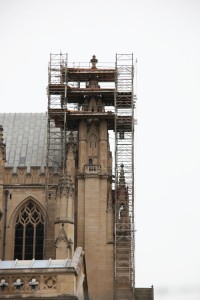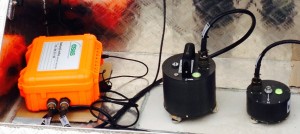What is the difference between a seismograph and an accelerograph? Which one is used for structural monitoring and which is for earthquake detection? We’re glad you asked!
A seismograph is a generic term used to describe a recording device that detects ground motion due to earthquake. Typically this will comprise a recorder and a seismometer, which is a sensor that detects the velocity of the ground. Seismometers are usually very sensitive and will easily detect a typical quarry blast at a range of 100km. Seismometers should not be confused with geophones, which also detect ground velocity but are typically much less sensitive and are used for close range blast monitoring and surveying.
An accelerograph is recorder that uses an accelerometer, which as you can tell from the name detects the acceleration of the ground. Accelerometers are much less sensitive than seismometers, but have a much greater range, detecting ±2g or more of ground acceleration (things start flying off the ground at 1g, when gravity is overcome). By comparison a seismometer will clip at full scale if you tap it too hard with your finger.
So, seismometers are good for detecting very small levels of ground motion (from very small or very distant events), and accelerometers are good at recording strong ground motion that is potentially damaging at the recording location. We will often install an earthquake recording station using both types of sensor to get the best of both worlds.
 SMAs, or strong motion accelerographs, are usually all that is required for monitoring the response of a structure during an earthquake, whether this a building, bridge, dam, power station, or any other critical infrastructure that could be affected by a large earthquake. Signals that are too weak to be clearly visible on an accelerograph will generally not be of any concern to the structural integrity of the asset.
SMAs, or strong motion accelerographs, are usually all that is required for monitoring the response of a structure during an earthquake, whether this a building, bridge, dam, power station, or any other critical infrastructure that could be affected by a large earthquake. Signals that are too weak to be clearly visible on an accelerograph will generally not be of any concern to the structural integrity of the asset.
The SRC has used various types of SMAs over the years. Those with MEMS accelerometers use tiny sensors like those found in cars to trigger airbags on impact, but are much more sensitive. They are less sensitive than dedicated earthquake accelerometers, but are still sufficient to record acceleration from significant earthquakes as the lower sensitivity limit is still well below damage thresholds. For monitoring the natural frequency and modal response of structures to earthquakes, more sensitive earthquake accelerometers are required.
The Gecko SMA-HR is uses a highly sensitive earthquake-monitoring-grade accelerometer to create an all-in-one accelerograph that is extremely simple to install.

